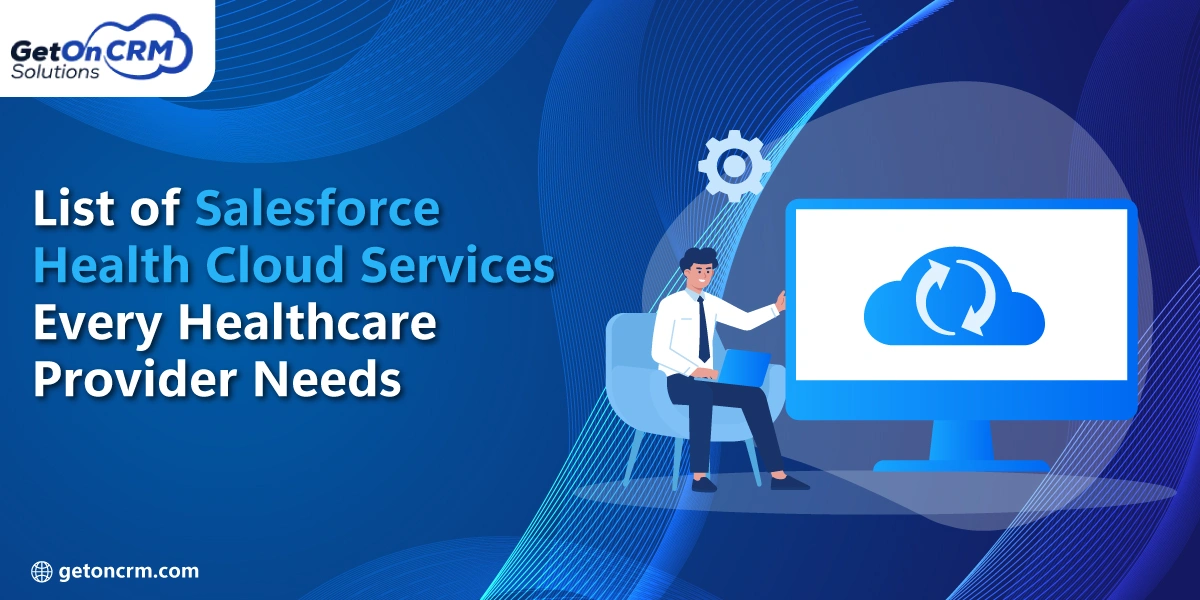As businesses strive to streamline their operations and save time and effort through automated order management systems like Salesforce Commerce Cloud, order management is increasingly important. In this article, we provide an in-depth Salesforce Order Management implementation guide covering everything from basic features to advanced ones and reveal why this platform has become such an indispensable asset in modern e-commerce environments.
The Evolution of Order Management Systems
Traditional Order Management Systems
Businesses previously relied on manual processes and spreadsheets to manage orders, which was time-consuming and error-prone, leading to customer dissatisfaction and operational inefficiency.
The Shift to Ecommerce Order Management Software
With the rise of online retailing came an increased need for order management software platforms that provide automated features to simplify order fulfillment and delivery processes. These platforms offer computerized features to ensure an order lifecycle goes smoothly from placement through completion and delivery.
Why Automation is Crucial
Automation order management systems enable businesses to focus on growth and customer service rather than administrative duties, providing real-time tracking and analytics for better insight into business performance.
What is Salesforce Order Management?
Salesforce Order Management is a feature-packed platform designed to automate and streamline order management processes for businesses of any size. It includes real-time inventory tracking, order routing tools, customer engagement tools, and more – providing businesses with a comprehensive solution that simplifies order management.
Integration with Salesforce Commerce Cloud
Salesforce Order Management stands out from its competition by fully integrating with Salesforce Commerce Cloud, creating an intuitive customer journey from browsing to purchasing and beyond, streamlining operations, and improving customer satisfaction.
Key Features
Salesforce Order Management stands out from other platforms with its many distinctive features, including advanced order management CPQ capabilities for complex pricing models, real-time analytics, and an easy, user-friendly interface that simplifies order administration.
Why Choose Salesforce for Order Management?
Scalability and Flexibility
Salesforce was designed to grow your business. From startups and enterprises alike, its flexible platform can be tailored specifically to fit their individual needs – offering a holistic solution for their e-commerce requirements.
Advanced Order Management Capabilities
Salesforce Order Management goes beyond basic order processing to provide advanced features like subscription management, complex pricing models, and real-time analytics – making it a comprehensive solution for modern businesses.
Salesforce Order Management Pricing
Understanding the cost is paramount when selecting an order management system, and Salesforce offers various pricing models to meet multiple business needs without breaking the bank. It provides value and functionality without breaking your budget.
Understanding the Salesforce Commerce Cloud Ecosystem
Core Components
Salesforce Commerce Cloud is more than an e-commerce platform; it’s an ecosystem of marketing, customer service, and order management components working together seamlessly for an unrivaled customer experience.
How it Complements Salesforce Order Management
The Commerce Cloud works in tandem with Salesforce Order Management to provide a comprehensive solution for e-commerce businesses. This integration allows for streamlined operations and a unified customer experience, from browsing to order fulfillment.
Pre-Implementation Steps: What You Need to Know
Assessing Your Current System
Before diving in with Salesforce, it’s crucial to evaluate your existing order management system to identify gaps and improvement areas. This evaluation will guide your implementation process so that you make full use of its advanced features.
Setting Objectives
Clearly define what you aim to achieve with Salesforce Order Management. Whether it’s faster order processing, better inventory management, or improved customer satisfaction, having clear goals will guide your implementation process.
Salesforce Order Management Implementation Guide
Implementation guides serve as a roadmap, ensuring all team members stay on the same page throughout the process. They should outline every step from initial setup through testing and quality assurance.
Also Read: Integrating Business Operations Seamlessly with Salesforce Commerce Cloud
How to Implement Salesforce Order Management: A Step-by-Step Guide
Step 1: Initial Setup
Assume the basic settings of Salesforce Order Management have been configured. It involves assigning user roles and permissions so only authorized personnel can access sensitive data. A clear hierarchy will streamline operations while increasing security.
Step 2: Data Migration
Transferring existing customer data and orders is a critical step. Ensure you follow best practices to maintain data integrity during the migration process. It may involve cleaning up existing data, mapping fields correctly, and running test imports.
Step 3: Workflow Customization
Build order processing workflows explicitly tailored to the needs of your business using Salesforce’s advanced order management features. Salesforce CPQ features allow for extensive customizability – such as setting up custom pricing models, discount structures, and approval workflows.
Step 4: Payment and Shipping Integrations
Integrate the payment gateways and shipping options that best fit your customers for an excellent customer experience. Salesforce supports multiple payment types, such as credit cards, digital wallets, and purchase orders, enabling you to offer products or services tailored specifically for each.
Step 5: Testing and Quality Assurance
Before going live, conduct several test orders to ensure all systems are operating as expected. This step should form an integral part of your Salesforce Order Management implementation guide and allows you to identify any bottlenecks or issues which need addressing before launch.
Post-Implementation: Monitoring and Optimization
Key Performance Indicators (KPIs)
Track KPIs such as order processing time, customer satisfaction rates, and inventory levels to evaluate the success of your Salesforce Order Management implementation. These metrics will offer valuable insights into areas requiring further optimization.
Data-Driven Improvements
Leverage Salesforce analytics to make informed decisions and continuously optimize order management processes. Regular monitoring and adjustment are vital for maximizing the return on investment for any Salesforce implementation project.
Troubleshooting Common Issues
Order Discrepancies
Salesforce offers robust troubleshooting tools to identify and resolve order discrepancies quickly. These include real-time alerts and logs, which can help pinpoint the cause of differences.
Payment Failures
Payment failures can be an overwhelming bottleneck in order processing. Salesforce provides advanced features for efficiently managing and resolving payment issues, including real-time alerts and automatic retry mechanisms.
Case Studies: Success Stories of Businesses Using Salesforce Order Management
Real-world examples offer invaluable insights into the capabilities and benefits of Salesforce Order Management. Below, we’ll explore case studies of businesses that have successfully implemented Salesforce for order management, focusing on the quantifiable benefits they’ve experienced.
Case Study 1: A Fashion Retailer’s Transformation
Background: A leading fashion retailer struggled with delayed order processing and inventory discrepancies. Their existing order management system was outdated and lacked the advanced features needed for efficient operations.
Implementation: After a thorough evaluation, the retailer chose Salesforce Order Management for its scalability and advanced features. They followed a detailed Salesforce Order Management implementation guide, which included data migration, workflow customization, and integration with their existing e-commerce platform.
Results: Post-implementation, the retailer saw a 30% reduction in order processing time and a 25% increase in customer satisfaction rates. Real-time inventory tracking eliminated stock discrepancies, leading to more accurate order fulfillment.
Case Study 2: Optimizing a Subscription-Based Business
Background: A subscription-based health and wellness company faced challenges managing recurring orders and customer retention. Their existing order management software needed to be equipped to handle the complexities of subscription billing.
Implementation: The company opted for Salesforce Order Management, mainly attracted by its advanced order management Salesforce CPQ features. It allowed them to set up complex pricing models and automate the billing process for their subscription services.
Results: The implementation led to a 20% increase in customer retention and a 15% increase in subscription renewals. Automated billing also reduced manual errors, improving operational efficiency.
Case Study 3: A Global Electronics Manufacturer
Background: A global electronics manufacturer was dealing with a fragmented order management process due to multiple regional systems. That led to inefficiencies and a need for real-time visibility into global operations.
Implementation: Salesforce Order Management was chosen for its ability to scale and integrate with other systems. The performance involved consolidating multiple regional systems into a unified global platform.
Results: The manufacturer experienced a 40% improvement in operational efficiency and a 35% reduction in order discrepancies. The unified system also provided real-time analytics, offering insights to optimize operations further.
Salesforce Order Management vs. Other Ecommerce Order Management Software
When it comes to choosing an order management system, businesses are often faced with a plethora of options. While Salesforce Order Management has emerged as a leading choice, it’s essential to understand how it stacks up against other e-commerce order management software in the market. Below, we’ll conduct a comparative analysis based on key features, scalability, and pricing.
Key Features Comparison
Salesforce Order Management:
- Real-time inventory tracking
- Seamless integration with Salesforce Commerce Cloud
- Advanced order management Salesforce CPQ features for complex pricing models
- User-friendly interface
- Real-time analytics and reporting
Other Software:
- Basic inventory tracking
- Limited integration capabilities
- Basic pricing models
- Less intuitive user interface
- Limited analytics
Scalability and Flexibility
Salesforce Order Management: One of Salesforce’s standout features is its scalability. Whether you’re a small startup or a large enterprise, Salesforce can be customized to meet your specific needs. Its flexibility allows easy integration with other systems, providing a holistic solution for your e-commerce needs.
Other Software: Many other platforms offer limited scalability, making it challenging to adapt as your business grows. Customization options may also be restricted, requiring additional third-party solutions for a complete e-commerce setup.
Pricing Considerations
Salesforce Order Management Pricing: Salesforce offers a variety of pricing models designed to fit different business needs. While there may be better options, its advanced features and scalability value often justifies the investment.
Other Software Pricing: While some other platforms may offer lower initial costs, they often lack the advanced features and scalability that Salesforce provides. That could lead to higher prices in the long run as businesses may need to invest in additional software or custom development.
Also Read: Migration From Site Genesis To SFRA: A Guide For eCommerce Brands
Conclusion: Optimize Order Management with GetOnCRM’s Salesforce Commerce Cloud Services
In summary, Salesforce Commerce Cloud is a comprehensive solution for automating order management, and GetOnCRM is your go-to service provider for implementing this robust platform. Offering seamless integration with Salesforce Order Management, it provides an all-in-one solution for streamlined operations and enhanced customer satisfaction.
With advanced features, scalability, and flexible pricing, choosing GetOnCRM’s Salesforce Commerce Cloud services is a strategic investment for any e-commerce business. Whether you’re a startup or a large enterprise, GetOnCRM ensures that Salesforce adapts to meet your specific needs, making it a future-proof choice for optimizing your order management.
Frequently Asked Questions on “How to Automate Order Management with Salesforce Commerce Cloud”
What does order management automation include in Salesforce Commerce Cloud?
It includes features like automated workflows for processing orders, real-time analytics, subscription management, payment/shipping integrations, and managing complex pricing.
How does this automation improve business operations?
By reducing manual errors, speeding up fulfilment, improving accuracy, and freeing staff to focus on strategic tasks instead of repetitive order entry.
What should companies do before implementing automated order management?
They should assess their current system, define clear goals (e.g. faster fulfilment, fewer returns), clean and migrate data properly, and plan integrations.
Can Salesforce handle complex order scenarios (pricing, shipping)?
Yes. It supports CPQ-style pricing models, multiple payment/shipping options, subscriptions, and custom workflows to handle complex fulfilment needs.
What are some benefits to customers?
Faster order confirmation, more accurate delivery estimates, better visibility into order status, fewer mistakes (e.g. wrong shipping or pricing), which increases satisfaction.























